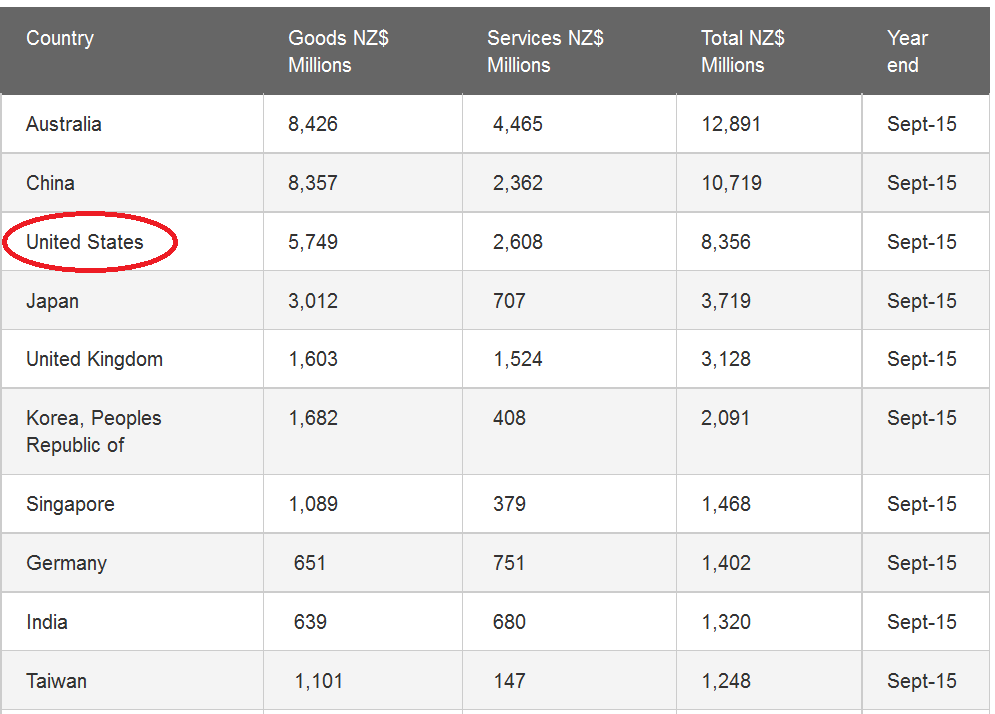Increasingly Confident American Consumers Lap up New Zealand Exports

Recent Rise in US Consumer Confidence suggests US could be a growing market for New Zealand exports, according to ANZ Bank.
The cheery US consumer is as likely to be toasting his or her good fortune with a glass of New Zealand sauvignon blanc as a goblet of Californian chardonnay, according to research from ANZ bank, a leading antipodean lender.
A growing taste for lamb and eating out at foreign restaurants which use less popular cuts of mutton and lamb, may also characterise the average Americans' changing tastes and habits, suggests the report, which highlights the growing popularity of New Zealand food and wine commodities in the USA.
"The rise of the US consumer has begun to catch New Zealand exporters’ eye recently. Indeed where there are established business relationships, favourable market access and less local competition (i.e. red meat and Sauvignon Blanc wine), there has already been a notable lift in exports over the past 18 months,” said the report from ANZ.
The trend is likely to continue after recent data showed US Consumer Confidence hitting an 11-month high in August, rising by 4.4 basis points to 101.1 from 96.7 previously.
Much of the increased optimism came from the high-earning, 35-54 cohort, who make between 50 -130k dollars per annum and comprise the target market for New Zealand produce.
“Segmentation of the market is equally important though with the likes of last night’s consumer confidence showing the lift being driven by the 35-54 year cohort and income bracket of US$50,000-$125,000 range. Indeed for the likes of lamb is becoming more popular amongst younger US consumers looking for more pronounced flavour than offered by pork and poultry.” Said ANZ’s report.
The US is New Zealand’s third largest export destination after Australia and China, importing 5.7bn in goods from NZ.
Whilst traditionally the economic health of China had been a major indicator of New Zealand exports, the rise of the US could also be a major factor in the future, and may help to offset a decline in China, although its export preferences appear to be different from the lower end dairy demand from China.
Nevertheless, the preference for wines and meats in the US could help support some of the new wave of horticultural exports being developed in New Zealand, which include kiwifruit, apples, seafood, wine and beef.
The US’s Consumer Confidence data for August showed a gain in the present situation index to 123.0 from 118.8.
The Expectations component improved to 123.00 from 118.8.
“Consumers’ assessment of both current business and labor market conditions was considerably more favorable than last month. Short-term expectations regarding business and employment conditions, as well as personal income prospects, also improved, suggesting the possibility of a moderate pick-up in growth in the coming months.” Said Lynn Franco, Director of Economic Indicators at the Conference Board.
The report went on to say that consumers’ appraisal of current conditions improved in August, with those stating business conditions were “good” rising from 27.3% to 30.0%, while those saying business conditions were “bad” remained virtually unchanged at 18.4%.
Those respondents claiming jobs were more “plentiful” increased from 23.0% to 26.0%, however, those claiming jobs are “hard to get” rose, from 22.1% to 23.4%.
Consumers’ optimism in relation to the short-term outlook rose in August, with the percentage of consumers expecting business conditions to improve over the next six months increasing from 15.7% to 17.3%, while those expecting business conditions to worsen fell from 12.4% to 11.1%.
Consumers’ outlook for jobs was also more optimistic than in July, with the proportion expecting more jobs in coming months rising from 13.5% to 14.2%, while those anticipating fewer jobs unchanged at 17.5%. The percentage of consumers expecting their incomes to increase improved from 17.1% to 18.8%, while the proportion expecting a decline decreased marginally from 11.0% to 10.7%.





